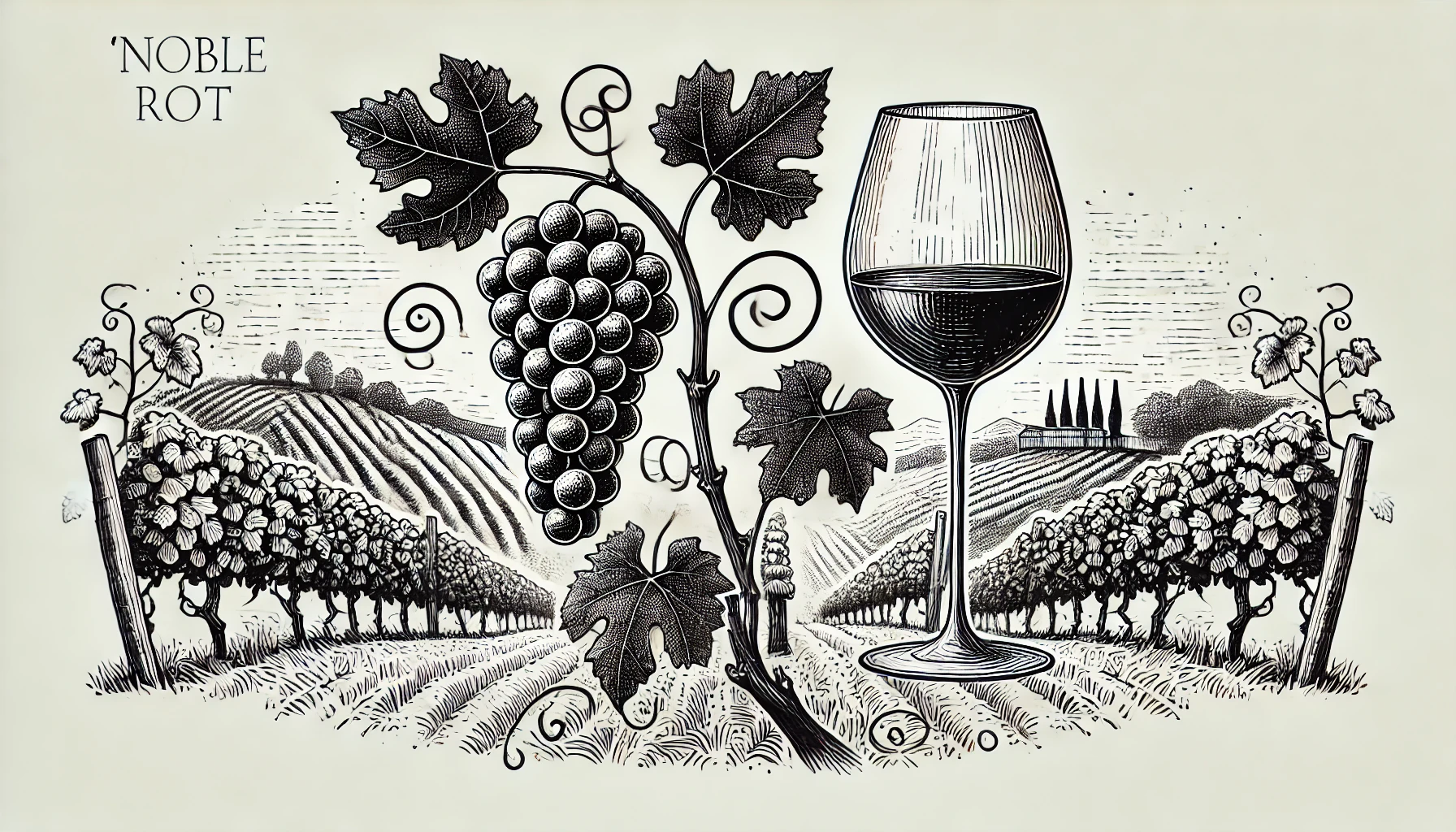
“Noble Rot” is the beneficial version of the fungus Botrytis cinerea. It plays a crucial role in the production of some of the world’s finest sweet wines. While the term “rot” might suggest spoilage, in the case of Noble Rot, it is a desired condition that concentrates the sugars in the grape, leading to richer, sweeter wines.
Noble Rot occurs under specific climatic conditions—when the vineyard experiences morning humidity followed by dry, sunny afternoons. Therefore, creating the ideal environment for the fungus to infect the grapes in a slow and controlled manner. As the fungus attacks the grape skins, it draws out water, concentrating the sugars, acids, and flavors in the fruit. The result is a grape that produces exceptionally sweet, flavorful, and complex wine.
Noble Rot is responsible for some of the world’s most famous sweet wines, including Sauternes from France, Tokaji from Hungary, and Trockenbeerenauslese from Germany. These wines are often characterized by intense flavors of honey, dried apricot, and marmalade. They have a lush, velvety texture and vibrant acidity that balances the sweetness.
So, while Botrytis can be devastating if it turns into “gray rot” under the wrong conditions, when the process is controlled and carefully monitored, Noble Rot is seen as a gift from nature that enhances winemaking and creates some of the most coveted dessert wines in the world.
Curious about more wine terms and insights? Visit our Wine Wiki section and explore the basic wine terms for expert definitions and tips!